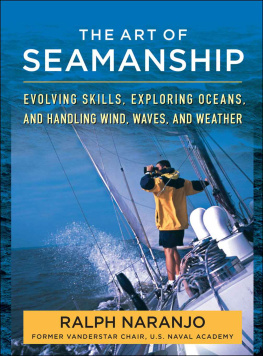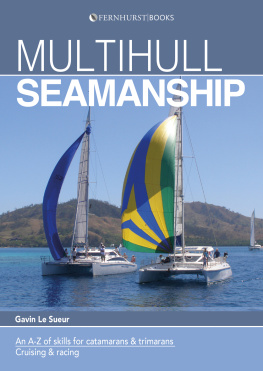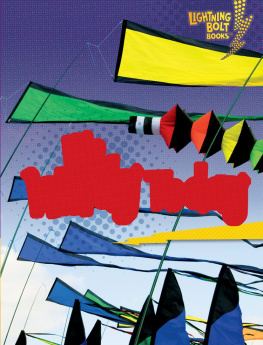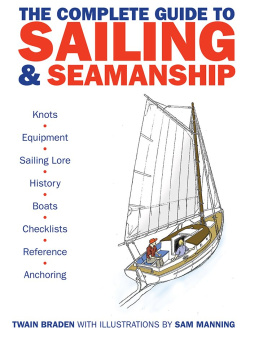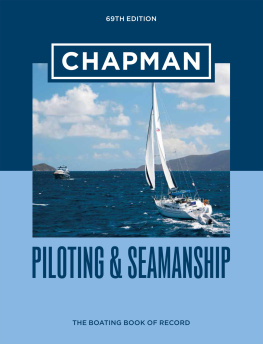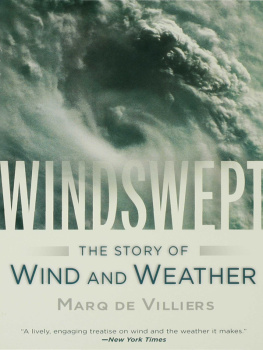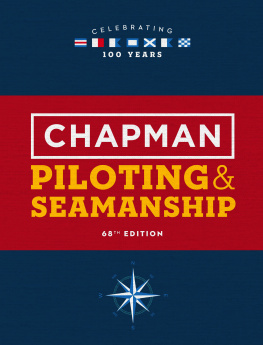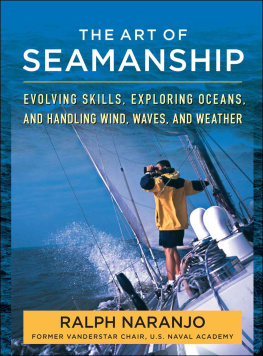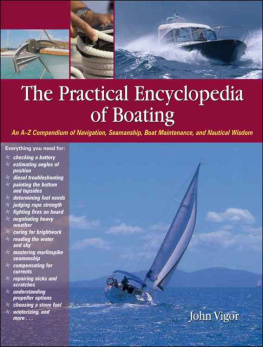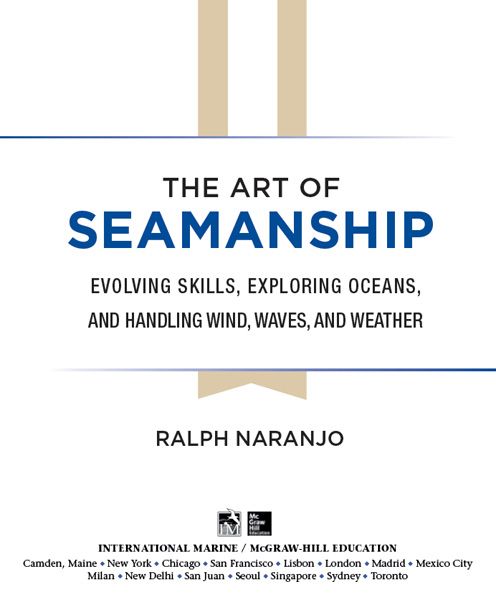
Copyright 2015 by Ralph Naranjo. All rights reserved. Except as permitted under the United States Copyright Act of 1976, no part of this publication may be reproduced or distributed in any form or by any means, or stored in a database or retrieval system, without the prior written permission of the publisher. The name International Marine and all associated logos are trademarks of McGraw-Hill Education. The publisher takes no responsibility for the use of any of the materials or methods described in this book, nor for the products thereof.
ISBN: 978-0-07-179158-8
MHID: 0-07-179158-2
The material in this eBook also appears in the print version of this title: ISBN: 978-0-07-149342-0, MHID: 0-07-149342-5.
eBook conversion by codeMantra
Version 1.0
All trademarks are trademarks of their respective owners. Rather than put a trademark symbol after every occurrence of a trademarked name, we use names in an editorial fashion only, and to the benefit of the trademark owner, with no intention of infringement of the trademark. Where such designations appear in this book, they have been printed with initial caps.
McGraw-Hill Education eBooks are available at special quantity discounts to use as premiums and sales promotions or for use in corporate training programs. To contact a representative, please visit the Contact Us page at www.mhprofessional.com.
Questions regarding the content of this book should be addressed to www.internationalmarine.com
TERMS OF USE
This is a copyrighted work and McGraw-Hill Education and its licensors reserve all rights in and to the work. Use of this work is subject to these terms. Except as permitted under the Copyright Act of 1976 and the right to store and retrieve one copy of the work, you may not decompile, disassemble, reverse engineer, reproduce, modify, create derivative works based upon, transmit, distribute, disseminate, sell, publish or sublicense the work or any part of it without McGraw-Hill Educations prior consent. You may use the work for your own noncommercial and personal use; any other use of the work is strictly prohibited. Your right to use the work may be terminated if you fail to comply with these terms.
THE WORK IS PROVIDED AS IS. MCGRAW-HILL EDUCATION AND ITS LICENSORS MAKE NO GUARANTEES OR WARRANTIES AS TO THE ACCURACY, ADEQUACY OR COMPLETENESS OF OR RESULTS TO BE OBTAINED FROM USING THE WORK, INCLUDING ANY INFORMATION THAT CAN BE ACCESSED THROUGH THE WORK VIA HYPERLINK OR OTHERWISE, AND EXPRESSLY DISCLAIM ANY WARRANTY, EXPRESS OR IMPLIED, INCLUDING BUT NOT LIMITED TO IMPLIED WARRANTIES OF MERCHANTABILITY OR FITNESS FOR A PARTICULAR PURPOSE. McGraw-Hill Education and its licensors do not warrant or guarantee that the functions contained in the work will meet your requirements or that its operation will be uninterrupted or error free. Neither McGraw-Hill Education nor its licensors shall be liable to you or anyone else for any inaccuracy, error or omission, regardless of cause, in the work or for any damages resulting therefrom. McGraw-Hill Education has no responsibility for the content of any information accessed through the work. Under no circumstances shall McGraw-Hill Education and/or its licensors be liable for any indirect, incidental, special, punitive, consequential or similar damages that result from the use of or inability to use the work, even if any of them has been advised of the possibility of such damages. This limitation of liability shall apply to any claim or cause whatsoever whether such claim or cause arises in contract, tort or otherwise.
To family, friends, and shipmates
who appreciate the sea
and the encounters it affords;
To those whove helped me turn
a book concept into reality;
Finally, a toast to a sailors son
whos gone from dinghy racing
to aircraft carrier driving and knows
the value of good seamanship.
CONTENTS
INTRODUCTION
T he science of seamanship surrounds usnew sailboats flaunt tank-tested designs, extensively field-tested electronics, and flashy technologymaking sailing safer, faster, easier, and more comfortable than ever before. And yet, all too often we hear of crews being helicopter lifted to safetyabandoning races and giving up on voyages gone awry. Some of these incidents filter back from far away oceans, but others unfold within view of more familiar landfalls. SeaTow and its sequels are doing banner business, so perhaps good seamanship calls for more than what science and technology have to offer. Its this very thought that prompted me to write a book about skill acquisition, vessel preparation, and crew trainingkey themes in The Art of Seamanship.
Just as my publisher and I approach the launch phase of this worthy effort, print, television, and social media sources have coalesced around the misadventures of a California cruising couple who set to sea with an infant, young child, and dreams of a voyage around the world. Only weeks after their departure, the dream turned into a nightmare as boat problems and a sick one-year-old caused parents to call for help. The U.S. Coast Guards Rescue Coordination Center (RCC) shunted U.S. Navy and Californias Air National Guard assets their way. Parachuting guardsmen heroically delivered medical assistance to the vessel drifting 900 miles off the coast of Mexico. Before departure the family had lived aboard their 36-foot cutter in San Diego, but had to scuttle the boat as part of the abandon-ship rescue procedure, a harsh death to a long-time dream. A multi-phase effort by rescue crew ensured that no lives were lost. Other sailors have not been so fortunate.
In the wake of this ill-fated voyage, questions have arisen about ones freedom to pursue adventure, what constitutes child endangerment, how vessel readiness should be determined, and why risk assessmenta multifaceted process involving not just boats and gear, but also crew and all the atmospherics of weather, sea, etc.is so essential. The Today Show will mainstream the atypical sailing story, regulatory bodies are already shaking their heads, and sailors will try to leverage important lessons learned. Im more caught up in this event than most, partially because of its seamanship implications and partially because several decades ago my wife Lenore and I, and our 4- and 6-year-old children, departed on what would turn into a 5-year voyage around the world. We sailed a boat about the same displacement as the one abandoned in the Pacific, and our firsthand experience with the challenges of such a voyage (chronicled in
Next page
